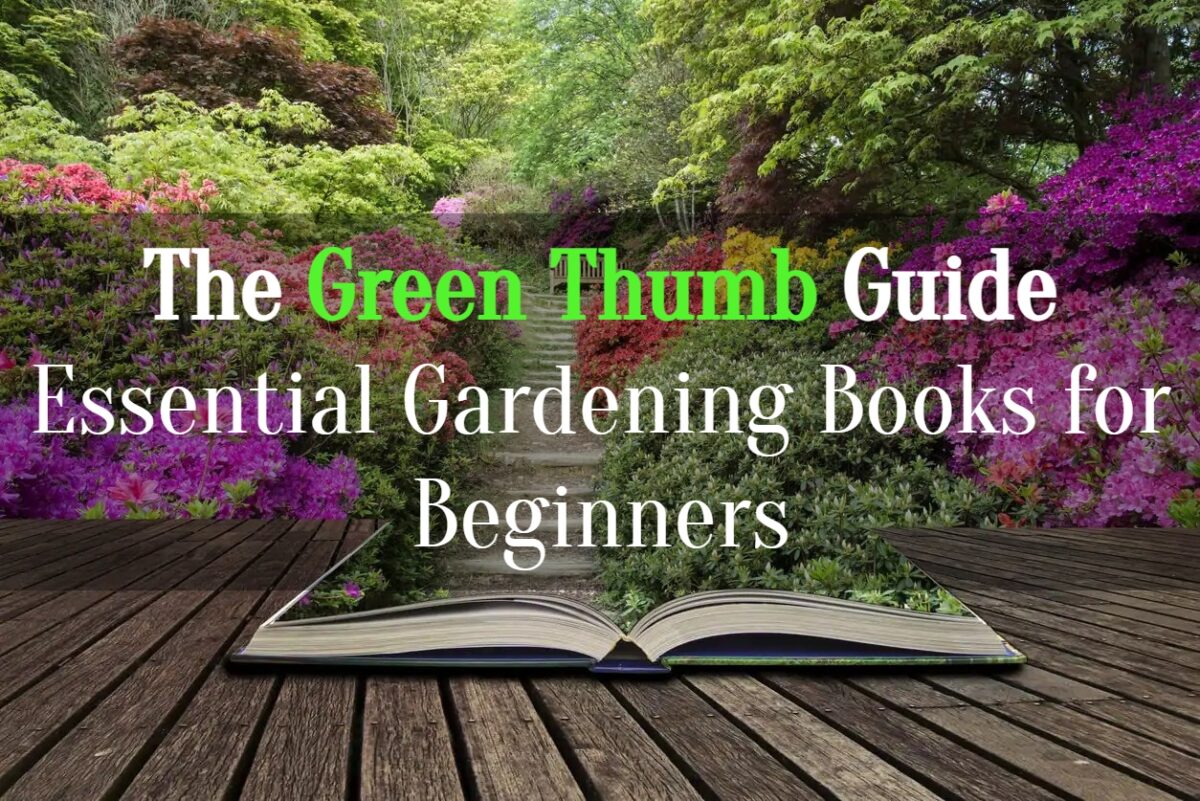In the world of gardening, knowledge truly blooms. Navigating the vast realm of gardening books for beginners can be overwhelming, but with the right guidance, it becomes an exciting journey. The Green Thumb Guide is a curated selection of essential gardening books crafted specifically for budding enthusiasts.
These books serve as invaluable companions, offering insights, techniques, and wisdom from seasoned experts. Growing and gardening may come naturally to some.
However, not all of us were blessed with a green thumb. Though beautiful, practical, and therapeutic, getting started in the gardening scene can be a little daunting. Luckily, books are available to ensure you make the right decision for your outdoor space.
Growing and gardening may come naturally to some. However, not all of us were blessed with a green thumb. Though beautiful, practical, and therapeutic, getting started in the gardening scene can be a little daunting. Luckily, gardening books for beginners are available to ensure you make the right decision for your outdoor space.
Understanding the Beginner’s Needs
Understanding the needs of novice gardeners is fundamental in creating a supportive framework for their gardening journey. Beginner gardeners often face a series of challenges that can deter their initial enthusiasm. Addressing these challenges through tailored guidance and resources is crucial to foster their interest and confidence in this fulfilling pursuit.
Overcoming Overwhelm
Novice gardeners are often bombarded with a wealth of information, which can feel overwhelming. They may struggle to navigate through technical jargon and complex gardening terminology.
To address this, gardening books for beginners are designed with accessible language, breaking down concepts into digestible bits. These books offer a starting point, introducing basic principles without inundating readers with advanced techniques.
Grasping Fundamental Concepts
Understanding soil types, plant care, watering schedules, and pest control are fundamental aspects of gardening. For beginners, comprehending these concepts can be daunting. Essential gardening books cater to these needs by providing clear explanations and practical examples. They simplify these concepts, allowing newcomers to grasp the basics and gradually build their knowledge base.
Building Confidence
Novices often lack confidence in their gardening abilities. They fear making mistakes that might harm their plants. Beginner-oriented books not only educate but also boost confidence. They offer step-by-step guidance, emphasizing that learning from mistakes is part of the process. Encouraging readers to start small, experiment, and learn from their experiences fosters a sense of empowerment and self-assurance.
Tailored Guidance
Every beginner gardener has unique aspirations and constraints. Some might be interested in urban gardening, while others may have spacious yards to cultivate. Understanding these diverse needs, beginner-oriented books cover a range of gardening methods and techniques. Whether it’s container gardening, raised beds, or vertical gardening, these books provide tailored guidance to suit different preferences and environments.
Patience and Realistic Expectations
A common pitfall for beginners is expecting instant results. Gardening is a process that requires patience and time. Essential gardening books for beginners emphasize the journey of nurturing plants from seeds to fruition. They instill the understanding that successful gardening is a gradual learning curve.
Criteria for Selecting Essential Gardening Books
Selecting essential gardening books for beginners involves a thoughtful process that considers various factors crucial for effective learning and skill development.
These criteria help ensure that the chosen books offer comprehensive guidance, clear instructions, and relevant information tailored to the novice gardener’s needs.
Accessibility of Language and Instructions
Beginners often find gardening terminology and technical details intimidating. Essential gardening books should use accessible language, avoiding overly complex jargon. Clear, concise instructions accompanied by illustrations or visuals can significantly enhance understanding. Books that break down concepts into easily understandable steps empower beginners to apply the knowledge effectively.
Diverse Gardening Techniques
A one-size-fits-all approach doesn’t work in gardening. Essential books should encompass a variety of gardening methods to cater to different preferences and environments. From traditional gardening to innovative approaches like permaculture or hydroponics, a diverse range of techniques widens the beginner’s understanding and encourages experimentation.
Reviews and Recommendations
Seeking reviews and recommendations from trusted sources or experienced gardeners is invaluable. Feedback from those who have used these books can provide insights into their practicality and effectiveness. Online reviews, recommendations from gardening communities, or endorsements from recognized experts can guide beginners in making informed choices.
Alignment with Gardening Goals
Every aspiring gardener has unique aspirations and goals. Some may aim for ornamental gardens, while others might prioritize growing their food. Essential gardening books should align with the reader’s objectives. Books that focus on specific niches or cater to different interests ensure that beginners find guidance that resonates with their gardening ambitions.
Practicality and Applicability
The chosen books should offer practical guidance that beginners can readily apply. They should cover essential topics such as soil preparation, plant selection, watering, pest control, and maintenance in a manner that encourages hands-on learning. Practical tips and troubleshooting advice for common issues equip beginners with the skills needed to succeed.
Clarity of Content and Organization
Well-organized content with logical progression aids comprehension. Books that follow a structured approach, starting from basics and gradually advancing to more complex topics, help beginners build a solid foundation. Clear chapter divisions, tables of contents, and indexes enhance the book’s usability as a reference guide.
Visual Elements
Visual aids such as illustrations, photographs, charts, and diagrams complement textual information, making it easier for beginners to grasp concepts visually. Books that incorporate these visual elements effectively enhance the learning experience and aid in practical application.
Beginner-Friendly Gardening Books
Here’s a list of essential gardening books for beginners that cover a range of topics from basic gardening principles to specialized techniques:
- “The Vegetable Gardener’s Bible” by Edward C. Smith – Ideal for beginners, this book provides comprehensive guidance on growing vegetables, covering soil preparation, plant care, and harvesting techniques.
- “The New Sunset Western Garden Book” by Kathleen Norris Brenzel – An excellent resource focusing on plants suitable for Western climates, offering advice on landscaping, plant selection, and care.
- “The Flower Gardener’s Bible” by Lewis Hill and Nancy Hill – Perfect for those interested in cultivating flowers, this book details everything from planning and planting to maintaining a vibrant flower garden.
- “Square Foot Gardening” by Mel Bartholomew – A beginner-friendly approach to gardening, emphasizing efficient use of space, raised beds, and systematic planting for maximum yield.
- “Rodale’s Basic Organic Gardening” by Deborah L. Martin – A guide to organic gardening, covering essential practices like composting, pest control, and soil health without synthetic chemicals.
- “The House Plant Expert” by D.G. Hessayon – For beginners interested in indoor gardening, this book provides insights into caring for houseplants and addressing common issues faced indoors.
- “Gaia’s Garden: A Guide to Home-Scale Permaculture” by Toby Hemenway – Introduces permaculture principles for sustainable gardening, focusing on creating self-sufficient ecosystems at home.
- “The Complete Compost Gardening Guide” by Barbara Pleasant and Deborah L. Martin – A comprehensive guide to composting, offering insights into creating and utilizing compost for healthier gardens.
- “The Pruning Book” by Lee Reich – An essential guide to pruning techniques, covering when, how, and why to prune various plants for optimal growth and health.
- “The Organic Gardener’s Handbook of Natural Pest and Disease Control” by Fern Marshall Bradley – Focuses on identifying and managing common pests and diseases using natural, environmentally friendly methods.
These books serve as valuable resources, providing beginners with the knowledge, techniques, and confidence to start and maintain successful gardens while exploring different aspects of gardening based on their interests.
Here’s a detailed explanation of each book:
“The Vegetable Gardener’s Bible” by Edward C. Smith
Raised beds, deep soil, organic practices, and broad rows are all key components of Smith’s renowned high-yield gardening technique. Learn how to creatively stretch your growing season, try out novel and odd types, and cultivate successful results with finicky plants.
The Vegetable Gardener’s Bible offers in-depth descriptions of hundreds of well-liked cultivators, as well as professional advice and a motivating road map for anyone hoping to enjoy an abundance of vegetables produced in their own backyard.
Home food gardeners will find vegetable-specific information, an unwavering commitment to organic methods, solutions for small spaces, and tips for extending the season in this invaluable resource, which helps gardeners grow an abundance of vegetables and herbs following Ed Smith’s tried-and-true system for high-yield harvests.
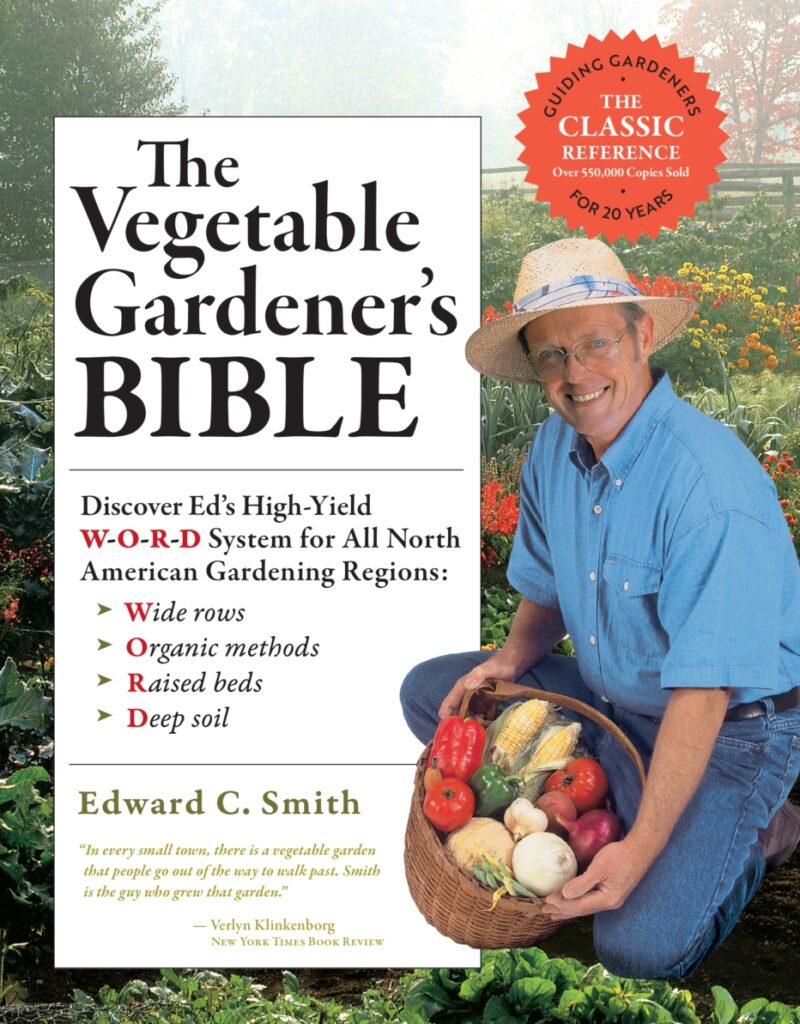
“The New Sunset Western Garden Book” by Kathleen Norris Brenzel
Like gardens, gardening is an ever-evolving art form that varies with the seasons. Due to the advent of new plants, gardening techniques, supplies, and lifestyles that present countless alternatives, gardening in the West is always evolving.
In response to this natural evolution, the editors of Sunset, the West’s most trusted gardening guide for over 80 years, have updated and redesigned The Western Garden Book in its new 2012 Ninth Edition.
Built on the best-selling success of the previous editions, this version of The Western Garden Book has thousands of color photographs, new graphics, and an easy-to-follow format. This book, written by experts for Western gardeners, is an essential tool for both beginning and experienced gardeners.
The New Western Garden Book has the following features:
- Some of the most inventive gardens in the West are featured in a photo gallery, including ones with living walls, green roofs, water- and fire-wise designs, and front yards composed totally of edibles. Every design is workable and feasible to execute.
- Climate Zone Maps and growing-season graphs for all regions of the West including Alaska and Hawaii.
- You can use the new “Plant Finder” feature to help you choose plants for your garden’s difficulty spots or for aesthetic purposes.
- More than 500 new species are included in the “A to Z Plant Encyclopedia” list of approximately 8,000 plants that are prospering in the West. The Western Garden Book features gorgeous color illustrations for the first time ever for every plant entry.
- “Gardening From Start to Finish” is a brand-new pictorial guide that takes readers step-by-step through the entire process of establishing a garden, from preparation of the soil to planting, growing, and care. It includes sections specifically on native plants, vegetables, grasses, and more.
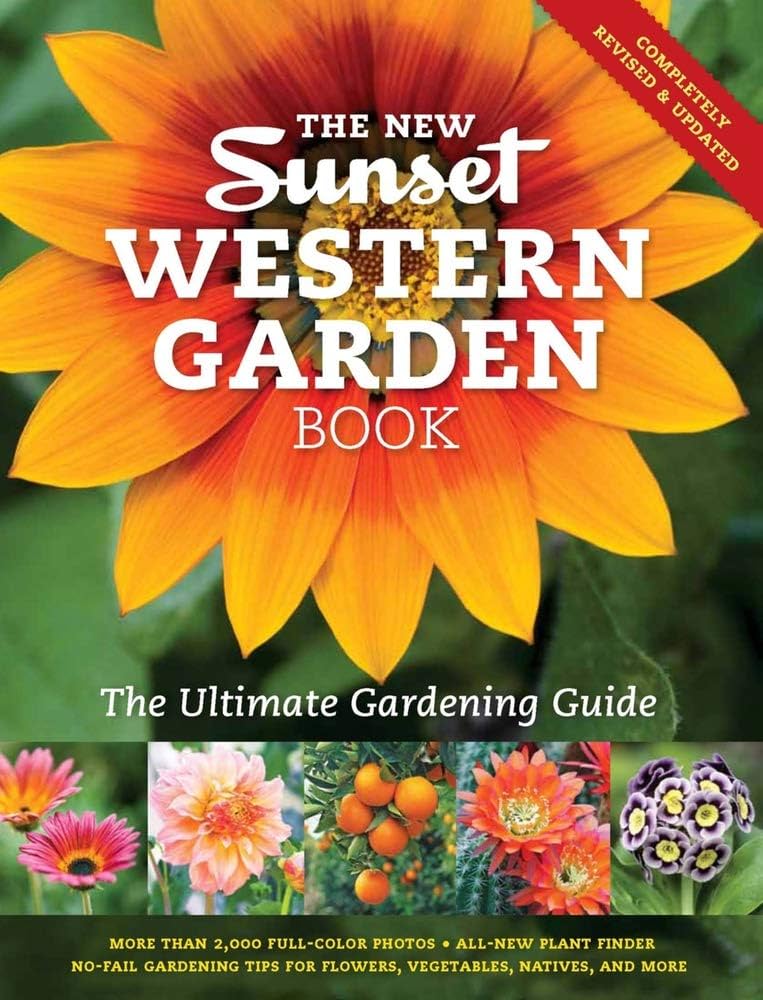
“Square Foot Gardening” by Mel Bartholomew
More current than ever is one of the best-selling garden books ever! Ready to inspire a whole new generation of gardeners. Mel Bartholomew, a former engineer and efficiency specialist, discovered the answer to most gardeners’ problems when he developed the “square foot gardening” method.
His ground-breaking approach is straightforward: it’s an inventive planting technique that relies on utilizing square foot blocks of garden space rather than rows. After the first year, there is no digging or tilling since gardeners build up, not down.
Additionally, the technique uses less water, weeding, and thinning.
Bartholomew says:
I found a better way to garden, one that’s more efficient, more manageable, and requires less work
Mel Bartholomew
Unsurprisingly, his approach gained international attention right once and was featured in every major newspaper and gardening magazine. More than 800,000 copies of his book have been sold as the companion to the widely renowned television series.
Reissued for the delight of a whole new generation of gardeners, the book that Ingram refers to as “the largest selling garden book in America” has been updated with new illustrations.
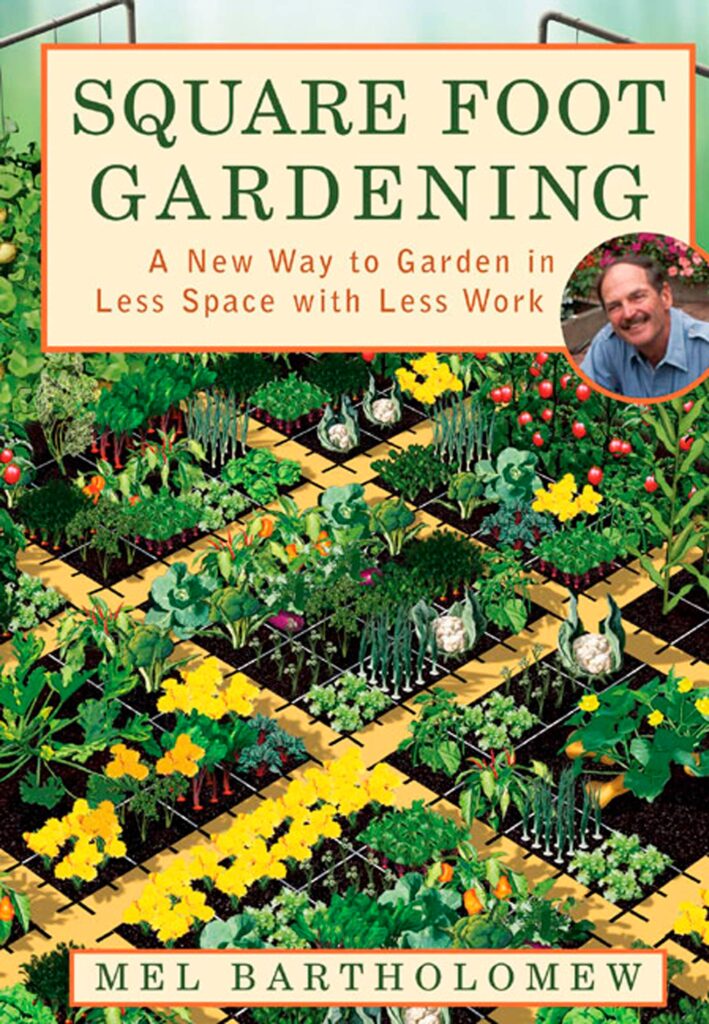
“The Complete Compost Gardening Guide” by Barbara Pleasant and Deborah
Create well-aged compost directly in your garden. This insightful book by Barbara Pleasant and Deborah Martin will make you reevaluate how you produce and utilize compost by outlining their six-step compost gardening technique.
When compost and plants coexist from the start, your garden will develop into a rich, organic space that promotes sustainability and growth. Additionally, you’ll discover that the enriched soil takes less mulching, weeding, and maintaining, saving you backbreaking labor for the same lush, lovely results.
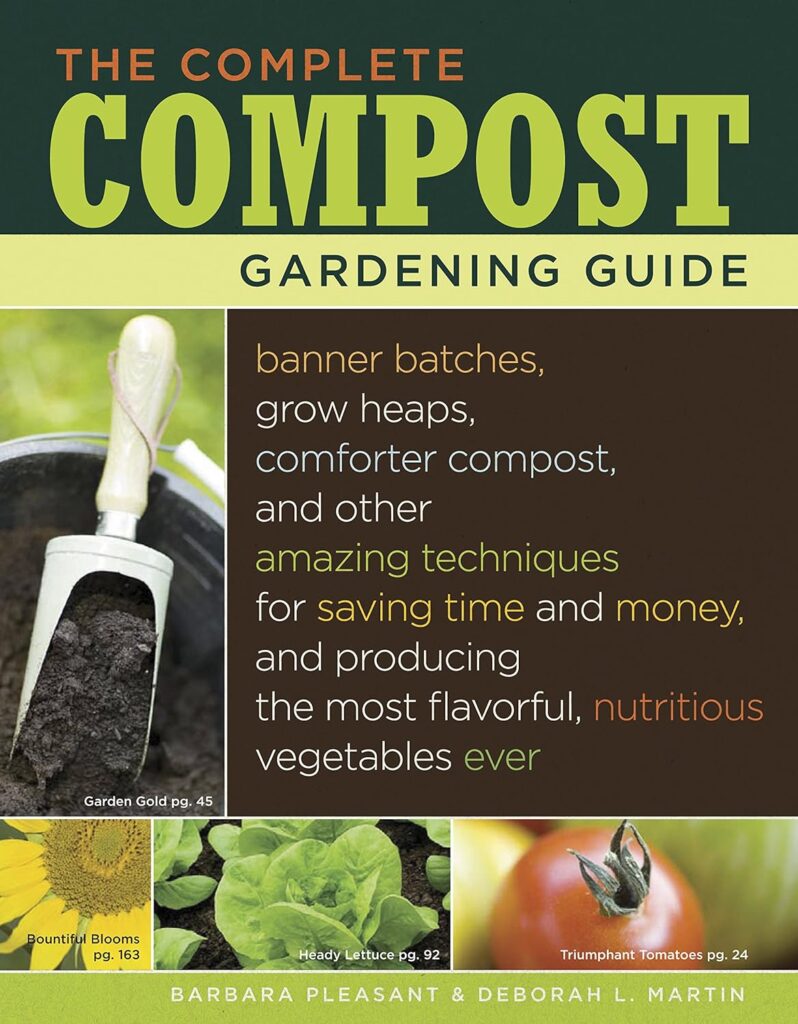
Interactive Learning and Community Engagement
Interactive learning and community engagement play pivotal roles in enhancing the gardening experience for beginners, offering opportunities for continuous learning, sharing knowledge, and fostering a sense of belonging within the gardening community.
Online Forums and Communities
Online platforms and forums dedicated to gardening serve as valuable resources for beginners. These platforms host discussions, Q&A sessions, and forums where novice gardeners can seek advice, share experiences, and learn from the collective wisdom of the community. Websites, social media groups, and dedicated forums provide a supportive environment for beginners to ask questions and receive guidance from experienced gardeners.
Local Gardening Clubs and Workshops
Joining local gardening clubs or attending workshops provides hands-on learning experiences. These clubs often organize events, workshops, and garden tours where beginners can interact with seasoned gardeners, participate in practical demonstrations, and gain firsthand knowledge about local gardening practices. Workshops focusing on specific topics such as composting, plant propagation, or garden design offer targeted learning opportunities.
Gardening Classes and Courses
Formal gardening classes and courses, whether online or in-person, offer structured learning environments for beginners. These courses cover various aspects of gardening, from the basics to advanced techniques, providing a comprehensive understanding of horticulture, soil management, pest control, and plant care. They offer a systematic approach to learning and often include hands-on activities and demonstrations.
Community Gardens
Engaging in community gardening projects allows beginners to learn through practical involvement. Community gardens provide spaces where individuals can cultivate their plots alongside other members. These spaces foster a sense of community, offering opportunities to share tools, knowledge, and experiences while collectively maintaining the garden.
Gardening Events and Expos
Attending gardening events, fairs, and expos exposes beginners to a wide array of gardening practices, innovative techniques, and the latest trends in horticulture. These events feature expert speakers, demonstrations, and exhibits, providing a platform for networking, learning about new gardening products, and gaining inspiration.
Mentorship Programs
Mentorship programs pair beginners with experienced gardeners who serve as mentors. This one-on-one guidance allows novices to receive personalized advice, hands-on training, and ongoing support tailored to their specific gardening interests and goals.
Seed Swaps and Plant Sharing
Participating in seed swaps or plant-sharing initiatives within the community fosters camaraderie among gardeners. It allows beginners to access a diverse range of seeds and plants while exchanging knowledge and experiences with fellow enthusiasts.
Gardening Books for Beginners – FAQS
What are some essential gardening books for beginners?
Some essential gardening books for beginners include “The Vegetable Gardener’s Bible” by Edward C. Smith, “Square Foot Gardening” by Mel Bartholomew, and “The Flower Gardener’s Bible” by Lewis Hill and Nancy Hill.
How do I choose the right gardening book as a beginner?
When selecting a gardening book as a beginner, consider factors such as accessibility of language, diverse gardening techniques covered, trusted reviews, alignment with your gardening goals, and the book’s practicality and clarity of content.
Are there specialized gardening books for urban gardening beginners?
Yes, specialized gardening books are focusing on urban gardening techniques for beginners. “The New Sunset Western Garden Book” by Kathleen Norris Brenzel covers plants suitable for urban settings, while “Gaia’s Garden: A Guide to Home-Scale Permaculture” by Toby Hemenway introduces permaculture principles applicable in limited spaces.
What gardening books offer guidance on organic gardening for beginners?
“Rodale’s Basic Organic Gardening” by Deborah L. Martin is an excellent resource for beginners interested in organic gardening. It covers essential organic practices like composting, pest control, and soil health without synthetic chemicals.
Are there comprehensive guides for beginners on pest control in gardening?
Yes, “The Organic Gardener’s Handbook of Natural Pest and Disease Control” by Fern Marshall Bradley is a comprehensive guide for beginners. It focuses on identifying and managing common pests and diseases using natural, environmentally friendly methods suitable for novice gardeners.
What is the best gardening book for beginners UK?
- Rodale’s Basic Organic Gardening: A Beginner’s Guide to Starting a Healthy Garden.
- What to Sow, Grow and Do: Volume 4 A seasonal garden guide (Bloom).
- You Grow, Gurl!: Plant Kween’s Lush Guide to Growing Your Garden
- The Ten-Minute Gardener: A month-by-month guide to growing your own.
Conclusion
These gardening books for beginners encapsulate the essence of structured guidance for beginners, advocating continuous learning and sharing within the gardening community. It emphasizes the significance of curated knowledge from quality gardening books while encouraging readers to explore and apply insights gained from these invaluable resources.

